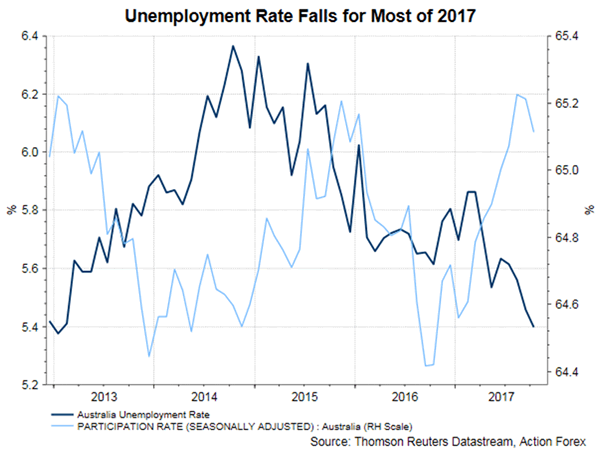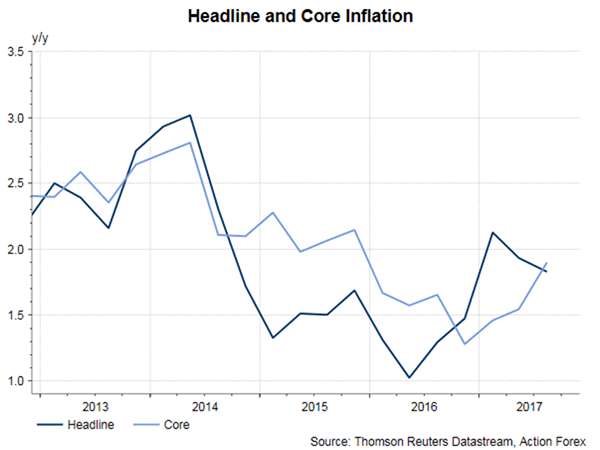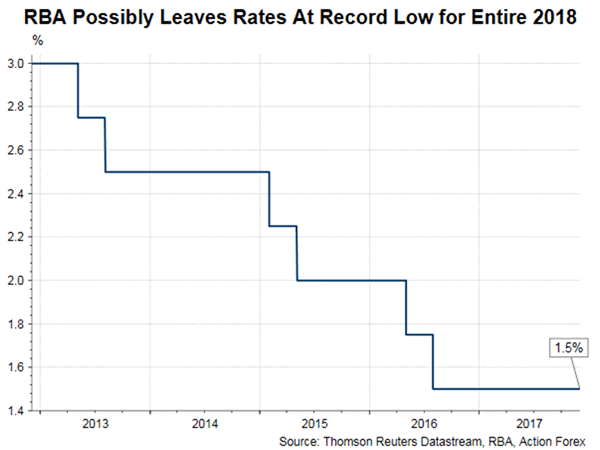RBA left the cash rate unchanged at 1.5% in November, following the last reduction in August 2016. The accompanying statement contained little surprise. While staying confident over the employment situation, policymakers remained weary off the persistently soft inflation and wage growth. The RBA stance is largely unchanged from the previous meeting. We retain the view that the policy rate would stay unchanged for the entire 2018.
Employment Situation
Australia’s unemployment rate fell to 5.4%, lowest since January 2013, in October.
RBA acknowledged that employment has increased in all states. The decline in unemployment rate has come together with ‘a rise in labour force participation’. This is a good sign for the job market. Rising participation rate signals more people enter the job market again in expectations of better economic environment and opportunities. The fall in unemployment rate in light of higher participation suggests that the job market can more than absorbing the bigger labor force. The central bank remained confident that ‘solid growth in employment’ could continue.

Inflation
Following a brief breach of the +2% target earlier this year, headline inflation been declining. While core CPI has been recovering after bottoming in mid-2016, it has remained below RBA’s desired level. As noted in the statement, the central bank noted that both the headline and core readings have been ‘running a little below 2%, while reiterating the hopes that inflation would ‘pick up gradually as the economy strengthens’. Affecting spending and hence inflation is wage growth which has remained subdued. The RBA suggested that the low-growth environment should ‘continue for a while yet, although the stronger conditions in the labour market should see some lift in wage growth over time’.

Housing Market
Policymakers suggested that ‘nationwide measures of housing prices are little changed over the past six months, with conditions having eased in Sydney’. While omitting the language that the housing prices in Melbourne were rising, CoreLogic data revealed that dwelling values in Melbourne rose +0.52% m/m in November. The rest of the comments about the housing market remained the same as the previous months. For instance, the RBA warned that ‘growth in housing debt has been outpacing the slow growth in household income for some time’ and the macroprudential measures have been implemented to curb medium-term risks associated with high and rising household indebtedness.
Australian Dollar
Given the fact the AUDUSD had fallen to a 5-month low of 0.753 last month and the pair recently has largely stayed at where it was at the November meeting, RBA noted that Aussie has been range-bounded. Yet, it continued to caution that ‘an appreciating exchange rate would be expected to result in a slower pick-up in economic activity and inflation than currently forecast’.













